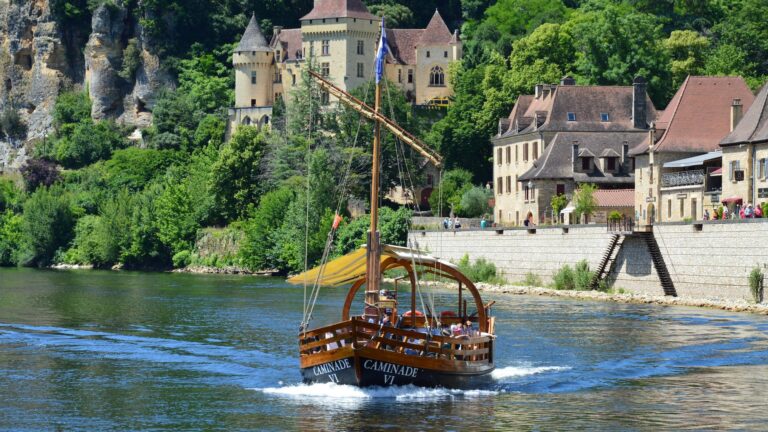How Do You Use Nautical Charts Effectively?
How To Use Nautical Charts Effectively
Nautical charts are essential tools for safe navigation, as they provide valuable information about the surrounding environment and provide an accurate representation of the seafloor and coastlines to aid sailing vessels in their travels.
With this in mind, it is important that seafarers learn how to use nautical charts effectively in order to ensure a safe journey for both themselves and their vessels.
This article will cover eight things that should be considered when using nautical charts, so that sailors can be confident in their navigational decisions both on and off the sea.
What is Nautical Chart Plotting?
Nautical chart plotting is the process of using a chart to determine an accurate position relative to known points of reference, including landmasses and shoals, as well as other ships or objects on the water’s surface or near it.
It involves studying the chart’s contours and depths, navigating by estimated time and speed of travel, determining landmarks that can be seen from the vessel, noting any changes in current or wind direction, and locating any potential hazards along the way.
A successful navigator must take into account all these factors when making a plot on a chart in order to arrive at an accurate location relative to its starting point.
Scale of the Chart
The scale of a chart is one of its most important characteristics, as it determines how accurately objects can be seen on the chart itself. Charts come in various scales, large-scale charts (such as 1:10,000) provide greater detail than small-scale charts (such as 1:1,000,000).
So when plotting on a nautical chart, it is important to select one with a scale appropriate for the boat’s intended route—a larger scale for longer voyages and smaller scales for shorter trips—in order to maintain accuracy throughout navigation.
Notes of the Chart
Another important element of nautical charts are notes, these include descriptions about currents, depths and other features that may affect navigation on a particular route (e.g., shoals or reefs). Notes also provide advice from local authorities or experienced sailors regarding particular areas, so consulting these before setting sail is vital if one wishes to steer clear of any dangerous obstacles along their course.
Chart Symbols
Charts also use symbols to represent various elements found within them, these can range from landmasses such as islands or cities to buoys or lighthouses which may help in navigation when travelling at night or through foggy conditions.
It is therefore essential for sailors to familiarise themselves with each symbol before embarking on their voyage so that they can accurately identify them on their nautical chart plots and make informed decisions based upon this information accordingly throughout their journey.
Chart Corrections
Charts are constantly changing due to new developments such as new buoys being placed or land reclamation projects being undertaken, therefore it is important for sailors to check regularly for any corrections that have been made since they last used a particular chart before setting sail with it as incorrect information could lead them astray during their voyage!
GPS Positions
Global Positioning System (GPS) devices are becoming increasingly popular among sailors due to their ease-of-use and accuracy, they allow mariners to track their exact position relative to known points at any given time which eliminates much guesswork during navigation and helps ensure that vessels remain on course throughout their journey regardless of weather conditions or other external factors which may otherwise lead them astray from their intended route without GPS assistance!
Radar Fixes
Radar devices are also commonly used by seafarers for navigation and locating potential hazards, these devices allow ships’ crews to detect nearby objects such as other vessels or rocks which could potentially cause damage if not avoided accordingly during navigation—so taking note of radar fixes while plotting on a nautical chart is crucial if one wishes to avoid any potential dangers along their route!
Visual Fixes
Vessels may also use visual cues such as lighthouses or shorelines in order to determine a more accurate position while navigating—so having some knowledge about these landmarks prior to setting sail will prove invaluable if one wishes ensure they remain on course throughout their voyage regardless of weather conditions or other external factors which may otherwise lead them astray from their intended route!
Position Circle & Position Line
When plotting courses onto a nautical chart sailors should also take note of two additional ways they can accurately determine position—these include drawing either a circular line around an object such as an island or buoy (known as ‘position circle’) or by extending a line outward from said object towards another point (known as ‘position line’). These methods offer extra accuracy when plotting courses onto charts which can prove invaluable when attempting more intricate navigational manoeuvres!
Conclusion
In conclusion, using nautical charts effectively requires knowledge about both its features and symbols used within them, this includes understanding its scale relative to one’s intended route, consulting notes provided by local authorities/experienced sailors regarding particular areas, familiarising oneself with each symbol found within it prior checking for any corrections made since last used etc.
Moreover taking note additional methods such as positioning circles/lines alongside more modern technologies like GPS & radar will also help ensure accuracy whilst navigating unfamiliar waters!







